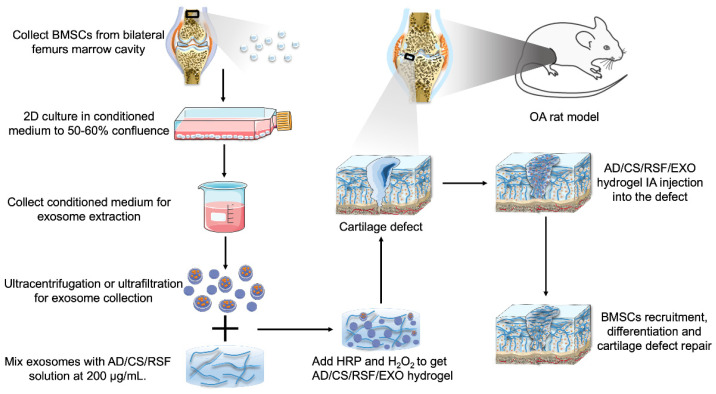Figure 4.
Schematic of fabricating AD/CS/RSF/EXO hydrogels for cartilage defect repair in a rat OA model. BMSCs were aseptically isolated from the bilateral femur marrow cavities of male Sprague-Dawley (SD) rats. When the cells reached 50–60% confluency in 2D culture flasks, they were rinsed and incubated for 48 h in serum-free medium. The collected conditioned medium was ultracentrifuged and ultrafiltered to obtain exosomes. The exosomes were mixed with AD/CS/RSF pre-gel solution, and then H2O2 and HRP were added to induce gelation. Subsequently, the cartilage defect was filled with the exosome-containing adhesive hydrogel. The exosomes released by the hydrogels recruited BMSCs that migrated and infiltrated the hydrogel and promoted BMSC proliferation and differentiation into chondrocytes. By inducing ECM production and neo-cartilage formation, the hydrogel facilitated the regeneration of cartilage defect in situ.

